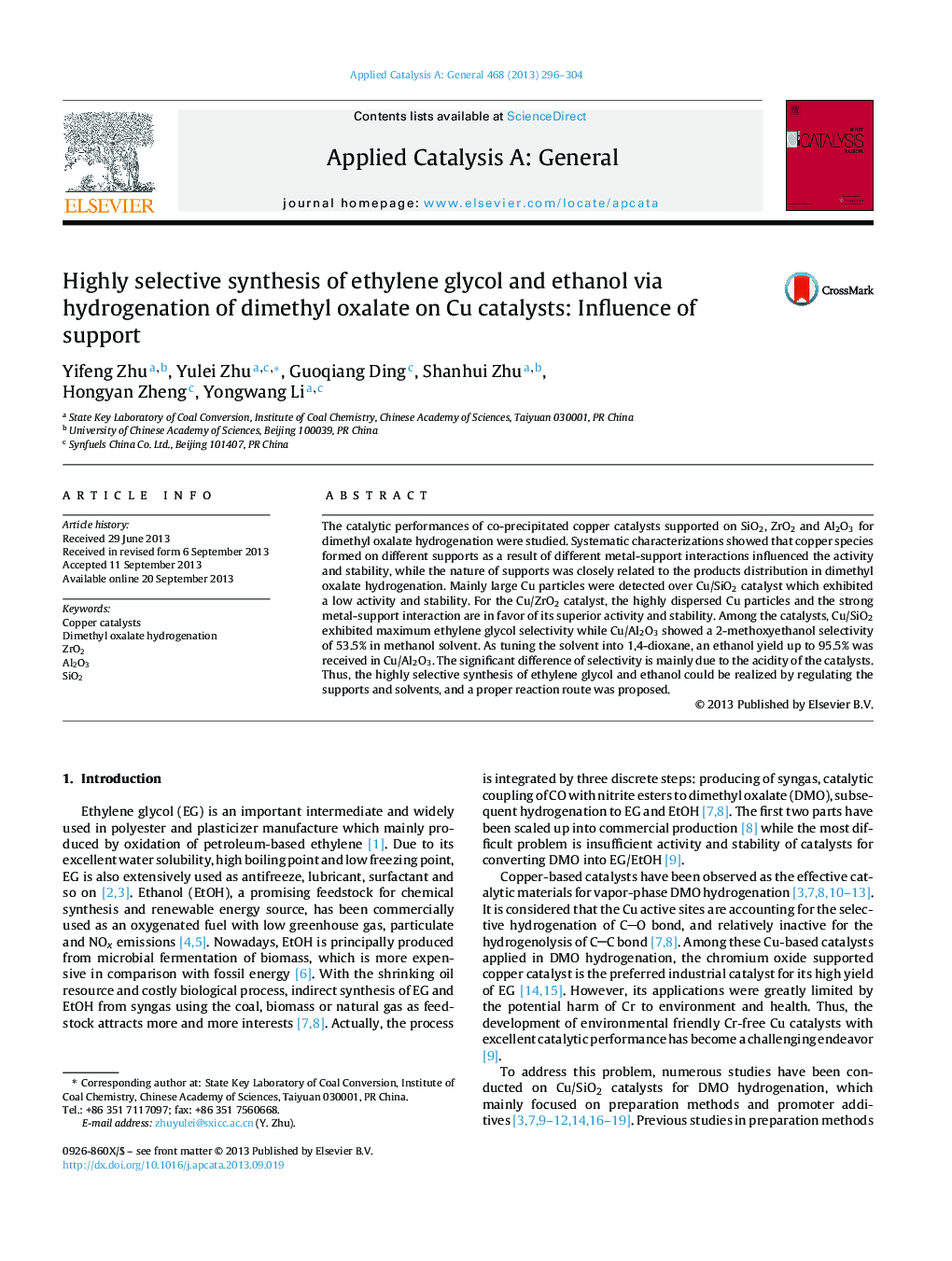| Article ID | Journal | Published Year | Pages | File Type |
|---|---|---|---|---|
| 40261 | Applied Catalysis A: General | 2013 | 9 Pages |
•Copper-support interactions significantly influence the hydrogenation activity.•Nature of supports influences selectivity in dimethyl oxalate hydrogenation.•Selective synthesis of ethylene glycol or ethanol via tuning solvent and support.•A possible reaction route of dimethyl oxalate hydrogenation was proposed.
The catalytic performances of co-precipitated copper catalysts supported on SiO2, ZrO2 and Al2O3 for dimethyl oxalate hydrogenation were studied. Systematic characterizations showed that copper species formed on different supports as a result of different metal-support interactions influenced the activity and stability, while the nature of supports was closely related to the products distribution in dimethyl oxalate hydrogenation. Mainly large Cu particles were detected over Cu/SiO2 catalyst which exhibited a low activity and stability. For the Cu/ZrO2 catalyst, the highly dispersed Cu particles and the strong metal-support interaction are in favor of its superior activity and stability. Among the catalysts, Cu/SiO2 exhibited maximum ethylene glycol selectivity while Cu/Al2O3 showed a 2-methoxyethanol selectivity of 53.5% in methanol solvent. As tuning the solvent into 1,4-dioxane, an ethanol yield up to 95.5% was received in Cu/Al2O3. The significant difference of selectivity is mainly due to the acidity of the catalysts. Thus, the highly selective synthesis of ethylene glycol and ethanol could be realized by regulating the supports and solvents, and a proper reaction route was proposed.
Graphical abstractFigure optionsDownload full-size imageDownload high-quality image (129 K)Download as PowerPoint slide
